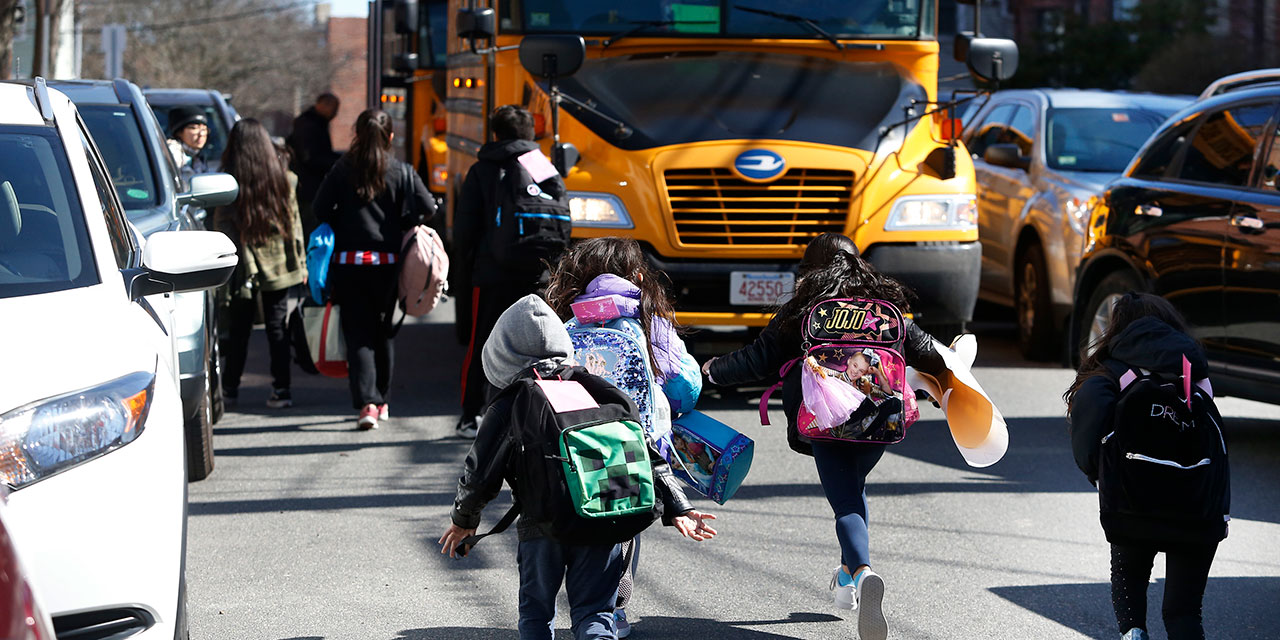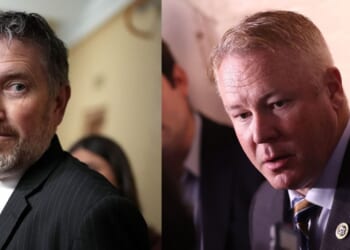
Earlier this month, on the heels of President Trump’s executive order on school discipline policies, the Education Department released guidance to ensure that students in unsafe public schools can access safe alternatives.
Like many of the department’s actions in the second Trump administration, this new guidance simply enforces a law already on the books. The letter directs states to implement the Elementary and Secondary Education Act’s “Unsafe School Choice Option” provision, which requires states to define what constitutes a “persistently dangerous” school environment and to let students in such environments attend a safe public school.
Finally, a reason to check your email.
Sign up for our free newsletter today.
The directive is an important step toward improving safety in America’s schools. But the federal government plays a limited role in education, which is primarily a state issue. By putting the onus on states to set standards for what constitute unsafe environments, the guidance allows states to define “persistently dangerous” as strictly as they want to. The Trump administration seems to hope that granting such discretion will increase the number of students eligible for placement in safer schools.
Unfortunately, only eight states and Puerto Rico have ever identified any of their schools as “persistently dangerous,” the designation that allows students from such schools to transfer to safer alternatives. Other states have failed to do so not because they lack unsafe schools but because they’ve ignored the law.
When we think about school safety, mass shootings often come to mind. But these horrific events overshadow the day-to-day behavioral issues and less newsworthy violent episodes that plague American public schools. Public schools saw over 850,000 violent incidents in the 2021-2022 school year alone; most weren’t deadly, but all were destabilizing. As a new report from the Independent Women’s Forum shows, regulations often tie teachers’ hands and prevent them from disciplining students effectively, which contributes to negative student behavior.
The Education Department’s new guidance helps reverse these trends in several ways. First, it requires states to identify unsafe schools, providing much-needed transparency—especially for parents with children in those schools. Second, by assigning this responsibility to the states, it upholds the principle of federalism. Finally, the guidance creates an incentive for schools to improve: no school wants to carry the “unsafe” label, which encourages administrators to restore order in the classroom by meting out detentions, suspensions, and expulsions rather than relying on failed progressive methods of discipline.
The new guidance comes at a pivotal time. Survey after survey has shown that student behavior has worsened over the past decade. Student misbehavior is now the Number One reason teachers are leaving the profession.
While poor student behavior can’t exclusively be blamed on policy—culture matters, too—federal policy certainly hasn’t helped. In 2014, the Obama administration’s Department of Education applied the “disparate impact” framework to schools’ disciplinary decisions. For example, if a school caught two black students and one white student skipping class, and suspended all three for doing so, the Obama DOE’s Office for Civil Rights could consider this 2-1 breakdown as evidence of discrimination. The Obama White House also encouraged schools to adopt restorative-justice approaches—conversing with students about misconduct rather than disciplining them—and discouraged any real punishment for bad behavior.
After such policies arguably contributed to the Parkland High School shooter evading detection, Education secretary Betsy DeVos reversed course in late 2018. By that point, however, the damage was done, and many states and localities had codified bad federal ideas. As a former teacher told the education news site The 74, “[P]olicymakers have made it so [teachers] have no authority. Only perceived authority. Only as much power as you get your kids to believe. Once the kid finds out he can say ‘F*** you,’ flip over a table, and he won’t get suspended, that’s that.”
The Covid-19 pandemic broke out just over a year later, and teachers’ unions, along with progressive policymakers, supported extended school closures. These closures, which cut children off from social interaction at critical stages of development, unsurprisingly worsened student behavior. In a December 2024 survey by the EdWeek Research Center, nearly half of teachers and school staff reported that “students’ behavior was a lot worse this fall when compared to their pre-pandemic behavior.”
The Trump administration’s new school discipline policies are a welcome step—though limited. States must go further to ensure that all schools are safe.
At least 15 states, along with the District of Columbia, restrict suspensions or expulsions for students of certain ages or grade levels. While some of these limits are reasonable, many prevent districts and teachers from maintaining order. In Massachusetts, for example, students cannot be suspended or expelled for more than 90 days—meaning potentially violent students can return to class in less than three months. States should rethink and revise these policies to better protect students and teachers.
Poor student behavior has created a generation of Americans accustomed to chaos. The White House’s guidance on unsafe schools is more than just enforcement of a long-ignored law—it’s a step to restoring sanity and order in education.
Photo by Jessica Rinaldi/The Boston Globe via Getty Images
City Journal is a publication of the Manhattan Institute for Policy Research (MI), a leading free-market think tank. Are you interested in supporting the magazine? As a 501(c)(3) nonprofit, donations in support of MI and City Journal are fully tax-deductible as provided by law (EIN #13-2912529).
Source link

















